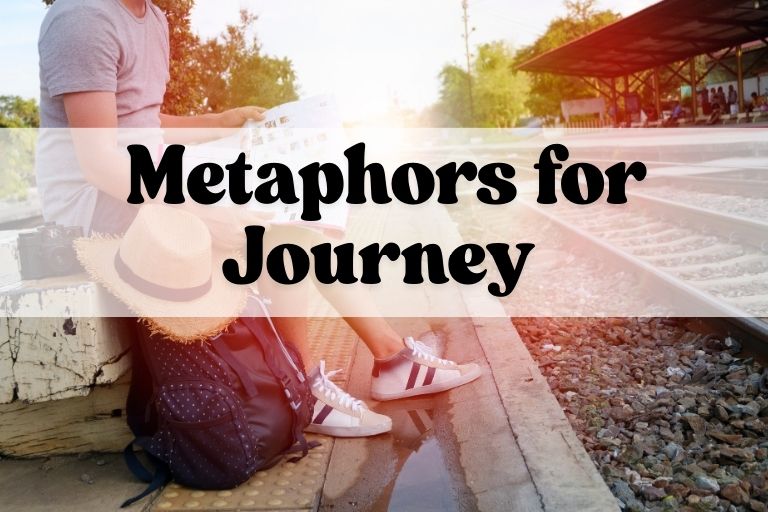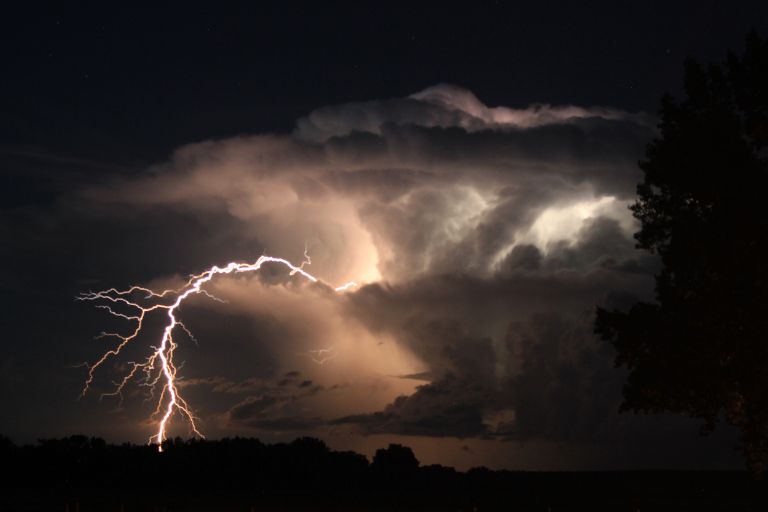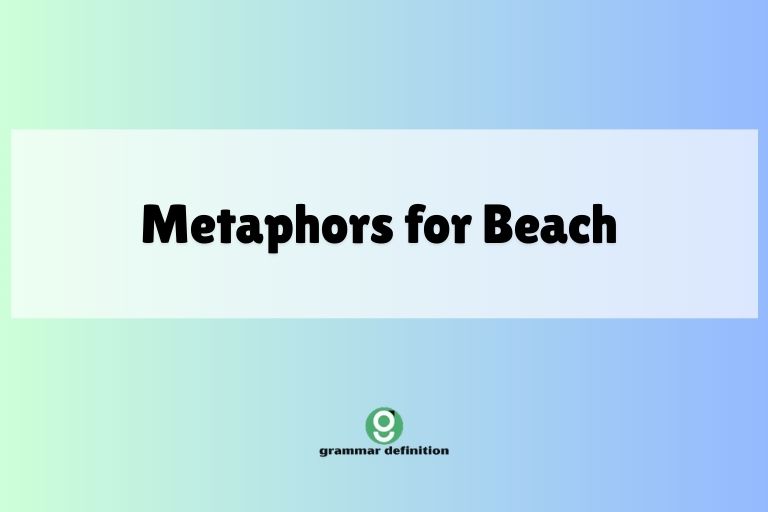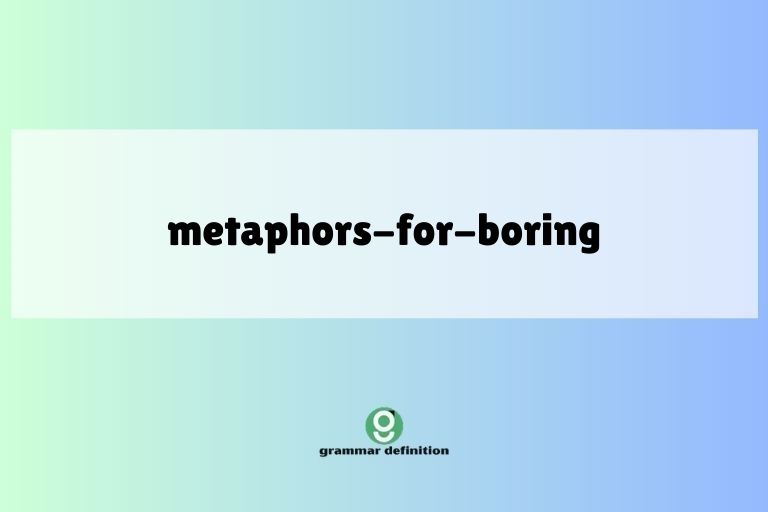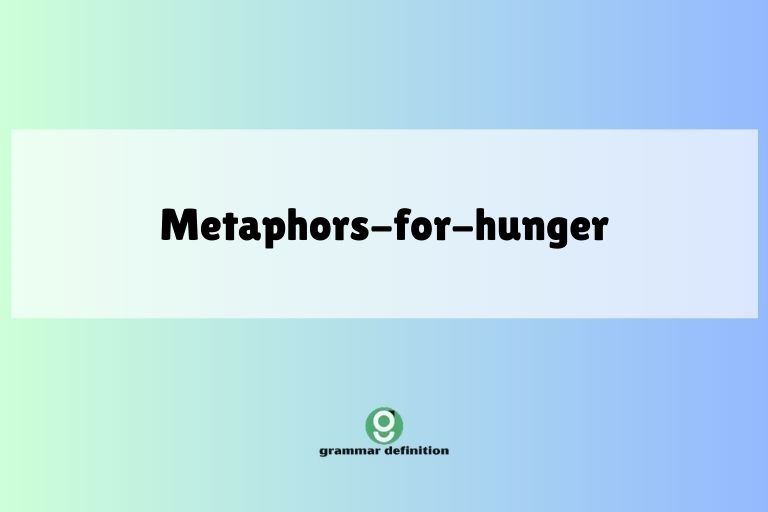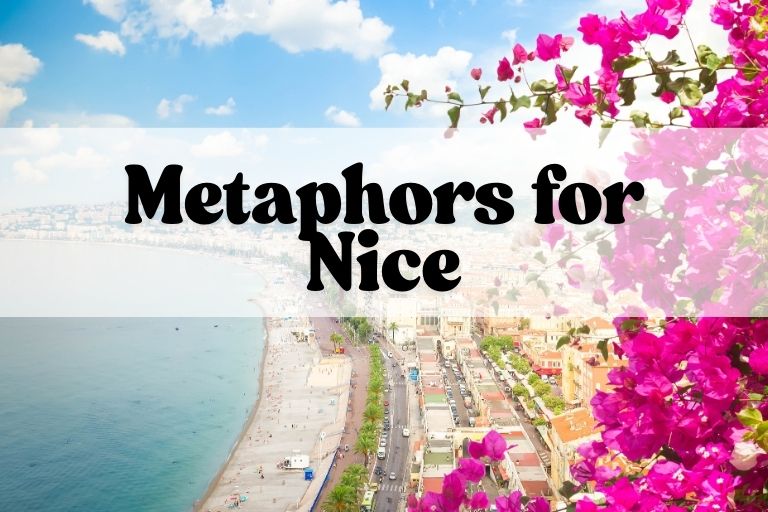Earth as Metaphor: A Grammatical Exploration
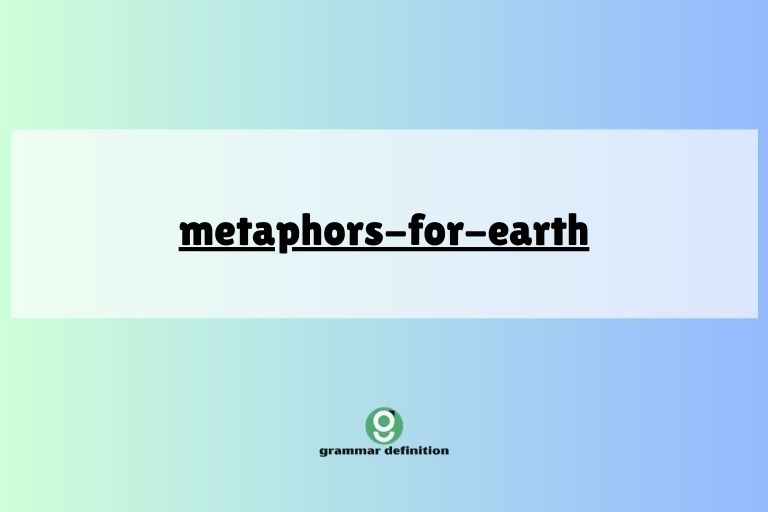
Metaphors are powerful tools in language, allowing us to understand complex concepts by relating them to something more familiar. When we talk about the Earth, metaphors are often used to convey its beauty, fragility, and importance.
Understanding these metaphors not only enriches our vocabulary but also enhances our comprehension of figurative language and its impact. This article will explore the grammatical structures and functions of metaphors used to describe the Earth, providing clear explanations, examples, and practice exercises.
This guide is perfect for English language learners, writers, and anyone interested in deepening their understanding of metaphorical language.
By exploring the grammatical structures that underpin Earth-related metaphors, you’ll gain insights into how language shapes our perceptions of the planet. This article will cover the definition of metaphors, their structural breakdown, various types, usage rules, common mistakes, and advanced topics.
Through extensive examples and interactive exercises, you’ll learn to identify, analyze, and effectively use metaphors in your own writing and speech.
Table of Contents
- Definition of Metaphor
- Structural Breakdown of Metaphors
- Types of Earth Metaphors
- Examples of Earth Metaphors
- Usage Rules for Earth Metaphors
- Common Mistakes with Earth Metaphors
- Practice Exercises
- Advanced Topics in Metaphorical Usage
- Frequently Asked Questions
- Conclusion
Definition of Metaphor
A metaphor is a figure of speech that directly compares two unrelated things by stating that one thing *is* another. Unlike similes, which use words like “like” or “as” to make a comparison, metaphors imply a similarity without explicitly stating it. The power of a metaphor lies in its ability to create vivid imagery and deeper understanding by transferring qualities from one concept to another. Metaphors are not just stylistic devices; they are fundamental to how we conceptualize and understand the world around us, including our planet.
In grammatical terms, a metaphor typically involves a subject (the Earth, in our case) and a predicate nominative (the metaphorical descriptor). The verb “to be” (is, are, was, were) often connects the subject and the descriptor, although this isn’t always explicit. Metaphors can function as nouns, verbs, adjectives, or even adverbs, depending on their role in the sentence.
For example, saying “Earth is a fragile egg” doesn’t literally mean the Earth is an egg. Instead, it implies that the Earth is delicate and easily broken, just like an egg.
This comparison highlights the vulnerability of our planet and the need to protect it. The metaphor functions as a noun phrase acting as a predicate nominative, describing the Earth.
Structural Breakdown of Metaphors
Understanding the structure of a metaphor involves identifying its key components and how they interact. The basic structure includes the tenor, the vehicle, and the ground. The tenor is the subject of the metaphor (e.g., Earth). The vehicle is the metaphorical term used to describe the subject (e.g., a fragile egg). The ground is the shared characteristics or associations between the tenor and the vehicle (e.g., fragility, vulnerability). Identifying these components helps to deconstruct and understand the intended meaning of the metaphor.
Consider the metaphor “Earth is a spaceship.” Here, the tenor is Earth, the vehicle is “spaceship,” and the ground includes ideas like being self-contained, traveling through space, and requiring careful management of resources. Recognizing the ground allows us to appreciate the deeper meaning of the comparison.
Furthermore, metaphors can be explicit or implicit. Explicit metaphors directly state the comparison, while implicit metaphors suggest the comparison without directly stating it. For instance, “The Earth’s lungs are being choked by pollution” is an implicit metaphor, as it doesn’t explicitly state that forests *are* lungs, but implies it through the verb “choked.” Recognizing whether a metaphor is explicit or implicit is crucial for accurately interpreting its meaning.
Types of Earth Metaphors
Earth metaphors can be broadly categorized based on the qualities or aspects they emphasize. Common categories include Earth as a living organism, Earth as a vessel, Earth as a resource, and Earth as a home.
Each category highlights different facets of our planet and influences our understanding of it.
Earth as a Living Organism
This type of metaphor portrays the Earth as a living being, often referred to as “Gaia” or a similar concept. It emphasizes the interconnectedness of all living things and the Earth’s ability to self-regulate.
These metaphors often use biological terms to describe geological or environmental processes.
Examples include: “The Earth is breathing,” “The Earth’s veins are rivers,” and “The Earth is suffering from a fever.” These metaphors highlight the Earth’s vitality and vulnerability to harm. By personifying the Earth, they evoke a sense of empathy and responsibility.
Earth as a Vessel
Earth as a vessel metaphors depict the planet as a container or ship carrying life through space. This emphasizes the finite resources and the need for careful stewardship.
These metaphors often focus on the limitations and responsibilities of humanity as passengers on this vessel.
Examples include: “Earth is a spaceship,” “Earth is an ark,” and “Earth is a lifeboat.” These metaphors highlight the shared responsibility of humanity to protect and manage the Earth’s resources. The vessel metaphor underscores the idea that we are all in this together.
Earth as a Resource
This category of metaphors focuses on the Earth’s role as a source of raw materials and sustenance. While often used in economic contexts, these metaphors can also highlight the importance of sustainable practices.
These metaphors often carry a risk of objectifying the planet if not used carefully.
Examples include: “Earth is a goldmine,” “Earth is a breadbasket,” and “Earth is a wellspring.” These metaphors can emphasize the abundance of resources but also the potential for exploitation. Using these metaphors effectively requires acknowledging the need for responsible resource management.
Earth as a Home
Earth as a home metaphors emphasize the planet as a place of belonging, security, and community. These metaphors often evoke a sense of emotional connection and responsibility towards the environment.
They highlight the importance of preserving the Earth for future generations.
Examples include: “Earth is our mother,” “Earth is our sanctuary,” and “Earth is our common ground.” These metaphors foster a sense of belonging and responsibility. They emphasize the need to protect the Earth not just for ourselves, but for all living things.
Examples of Earth Metaphors
Here are several tables illustrating various metaphors for Earth, categorized by type. Each table provides specific examples, highlighting the tenor, vehicle, and ground of the metaphor.
The following table illustrates metaphors that depict the Earth as a living organism. These metaphors often highlight the planet’s interconnected systems and its ability to sustain life.
| Metaphor | Tenor | Vehicle | Ground |
|---|---|---|---|
| The Earth is breathing. | Earth | Breathing | Exchange of gases, life-sustaining process |
| The Earth’s veins are rivers. | Rivers | Veins | Carry essential fluids, vital for life |
| The Earth is a giant heart, pumping life through its ecosystems. | Earth | Heart | Central organ, distributing life-giving resources |
| The Earth is suffering from a fever. | Global Warming | Fever | Elevated temperature, sign of illness |
| The Earth has skin of green and blue. | Earth’s surface | Skin | Outer layer, protective covering |
| The Earth’s forests are its lungs. | Forests | Lungs | Provide oxygen, essential for breathing |
| The planet’s wounds are visible from space. | Environmental damage | Wounds | Damage, injury, visible scars |
| The Earth’s immune system is weakening. | Environmental resilience | Immune System | Ability to resist and recover from harm |
| The Earth is pregnant with life. | Earth | Pregnant | Bearing new life, nurturing potential |
| The Earth is a sleeping giant. | Earth | Sleeping Giant | Potential energy, dormant power |
| The mountains are the Earth’s bones. | Mountains | Bones | Structural support, framework |
| The Earth is shedding its skin. | Climate change | Shedding skin | Transformation, renewal, sometimes painful |
| The Earth is a vast organism, interconnected and interdependent. | Earth | Organism | Living entity, complex system |
| The planet’s breath is the wind. | Wind | Breath | Movement of air, vital for life |
| The Earth’s tears are the rain. | Rain | Tears | Water, cleansing, emotional release |
| The Earth’s blood is the oil beneath the surface. | Oil | Blood | Vital resource, energy source |
| The Earth is a giant, ancient tree. | Earth | Tree | Old, strong, provides life |
| The Earth’s voice is the sound of nature. | Nature | Voice | Expression, communication |
| The Earth’s memory is etched in its geological layers. | Geological layers | Memory | History, records of the past |
| The Earth’s heartbeat is the rhythm of the tides. | Tides | Heartbeat | Regular pulse, life-sustaining rhythm |
| The Earth is a garden that needs tending. | Earth | Garden | Requires care, cultivation, and attention |
| The Earth is a school, teaching us valuable lessons about life. | Earth | School | Provides knowledge, experiences, and growth |
| The Earth is a symphony of life. | Earth | Symphony | Harmonious blend, interconnected elements |
The following table illustrates metaphors that depict the Earth as a vessel. These metaphors often emphasize the limited resources and the shared responsibility of protecting our planet.
| Metaphor | Tenor | Vehicle | Ground |
|---|---|---|---|
| Earth is a spaceship. | Earth | Spaceship | Self-contained, traveling through space, limited resources |
| Earth is an ark. | Earth | Ark | Safe haven, preserving life, facing a flood |
| Earth is a lifeboat. | Earth | Lifeboat | Survival, limited capacity, shared responsibility |
| Our planet is a fragile raft adrift in a cosmic sea. | Earth | Raft | Vulnerable, dependent on the sea, requires navigation |
| The Earth is a treasure chest. | Earth | Treasure Chest | Valuable contents, needs protection |
| Earth is a delicate bubble. | Earth | Bubble | Fragile, easily burst, contains something precious |
| The world is a stage. | Earth | Stage | Setting for events, place of drama |
| Earth is a giant terrarium. | Earth | Terrarium | Enclosed environment, self-sustaining ecosystem |
| The Earth is a spinning top. | Earth | Spinning Top | Balance, momentum, susceptible to disruption |
| Earth is a global village. | Earth | Global Village | Interconnected community, shared resources |
| Earth is a petri dish. | Earth | Petri dish | Controlled environment, observing growth and change |
| Earth is a tapestry. | Earth | Tapestry | Interwoven elements, complex design |
| The Earth is a carousel. | Earth | Carousel | Circular journey, repetitive cycles |
| Earth is a cosmic dance floor. | Earth | Dance floor | Rhythmic movement, interconnected partners |
| The Earth is a floating island. | Earth | Floating island | Isolated, self-contained, vulnerable |
| The Earth is a pressure cooker. | Earth | Pressure cooker | Intense conditions, potential for explosion |
| The Earth is a theater. | Earth | Theater | Place of performance, unfolding events |
| Earth is a puzzle. | Earth | Puzzle | Complex, requires solving, interconnected pieces |
| The Earth is a clock. | Earth | Clock | Timekeeping, cyclical patterns |
| The Earth is a storybook. | Earth | Storybook | Narrative, history, lessons to be learned |
| Earth is a cradle. | Earth | Cradle | Nurturing, protective, beginnings |
| The Earth is a mirror. | Earth | Mirror | Reflects our actions, shows consequences |
| Earth is a classroom. | Earth | Classroom | Place of learning, growth, and development |
The following table illustrates metaphors that depict the Earth as a resource. These metaphors highlight the Earth’s ability to provide sustenance and raw materials, but also the potential for exploitation.
| Metaphor | Tenor | Vehicle | Ground |
|---|---|---|---|
| Earth is a goldmine. | Earth | Goldmine | Source of wealth, valuable resources, potential for exploitation |
| Earth is a breadbasket. | Earth | Breadbasket | Source of food, sustenance, agricultural abundance |
| Earth is a wellspring. | Earth | Wellspring | Source of water, renewal, life-giving resource |
| The Earth is a storehouse of untapped potential. | Earth | Storehouse | Abundance, reserve, potential for future use |
| The planet is a garden, ripe for the picking. | Earth | Garden | Cultivated resource, source of food and beauty |
| Earth is a pantry. | Earth | Pantry | Storage of food, sustenance, provisions |
| The Earth is a bank. | Earth | Bank | Store of value, investment, resource management |
| Earth is a pharmacy. | Earth | Pharmacy | Source of medicine, healing properties, natural remedies |
| The Earth is a quarry. | Earth | Quarry | Source of stone, raw materials, industrial resources |
| Earth is a mine of information. | Earth | Mine | Source of knowledge, discoveries, historical data |
| Earth is a treasure trove. | Earth | Treasure trove | Valuable finds, hidden riches, abundant resources |
| The Earth is a cornucopia. | Earth | Cornucopia | Abundance, overflowing horn of plenty, bountiful harvest |
| Earth is a larder. | Earth | Larder | Storage of food, provisions, sustenance |
| The Earth is a canvas. | Earth | Canvas | Material for art, potential for creation, expression |
| Earth is a library. | Earth | Library | Repository of knowledge, history, information |
| The Earth is a workshop. | Earth | Workshop | Place of creation, production, innovation |
| Earth is a buffet. | Earth | Buffet | Variety of resources, abundant choices |
| The Earth is a reservoir. | Earth | Reservoir | Storage of water, life-giving resource, sustainability |
| Earth is a garden of delights. | Earth | Garden of delights | Pleasures, beauty, sensory experiences |
| The Earth is a power plant. | Earth | Power plant | Source of energy, natural resources, sustainable power |
| Earth is a factory. | Earth | Factory | Production, creation, transformation |
| The Earth is a market. | Earth | Market | Exchange of goods, resources, trading |
| Earth is a playground. | Earth | Playground | Place of enjoyment, recreation, exploration |
The following table illustrates metaphors that depict the Earth as a home. These metaphors emphasize the emotional connection to our planet and the need to protect it for future generations.
| Metaphor | Tenor | Vehicle | Ground |
|---|---|---|---|
| Earth is our mother. | Earth | Mother | Nurturing, protective, life-giving |
| Earth is our sanctuary. | Earth | Sanctuary | Safe haven, refuge, place of peace |
| Earth is our common ground. | Earth | Common Ground | Shared space, place of unity, mutual responsibility |
| The Earth is a nest. | Earth | Nest | Home, comfort, security |
| The Earth is a cradle for humanity. | Earth | Cradle | Beginnings, nurturing, place of growth |
| Earth is our village. | Earth | Village | Community, interconnectedness, shared resources |
| The Earth is our ancestral home. | Earth | Ancestral Home | Heritage, roots, connection to the past |
| Earth is our paradise. | Earth | Paradise | Ideal place, beauty, harmony |
| The Earth is our foundation. | Earth | Foundation | Support, stability, basis for life |
| Earth is our haven. | Earth | Haven | Safe place, refuge, protection |
| The Earth is our garden of Eden. | Earth | Garden of Eden | Perfection, unspoiled beauty, harmony with nature |
| Earth is our home sweet home. | Earth | Home sweet home | Comfort, familiarity, belonging |
| The Earth is our common heritage. | Earth | Common heritage | Shared legacy, cultural roots, collective responsibility |
| Earth is our life support system. | Earth | Life support system | Essential elements, sustaining life, interconnected functions |
| The Earth is our shared backyard. | Earth | Shared backyard | Common space, community responsibility, collective care |
| Earth is our refuge. | Earth | Refuge | Safe haven, protection, sanctuary |
| The Earth is our sanctuary of life. | Earth | Sanctuary of life | Preservation, protection, nurturing of life |
| Earth is our eternal home. | Earth | Eternal home | Timeless, enduring, everlasting |
| The Earth is our meeting place. | Earth | Meeting place | Convergence, shared space, interaction |
| Earth is our global neighborhood. | Earth | Global neighborhood | Community, interconnectedness, shared responsibility |
| The Earth is our natural cathedral. | Earth | Natural cathedral | Sacred space, awe-inspiring beauty, spiritual connection |
| Earth is our universal home. | Earth | Universal home | Inclusive, encompassing, belonging for all |
| The Earth is our ultimate responsibility. | Earth | Ultimate responsibility | Primary duty, crucial obligation, essential stewardship |
Usage Rules for Earth Metaphors
When using metaphors for Earth, it’s important to consider several rules to ensure clarity, effectiveness, and avoid unintended connotations. Consistency is key; choose a metaphor and maintain it throughout the writing or speech. Avoid mixing metaphors that create conflicting images. For example, don’t say “Earth is a spaceship that’s also a goldmine overflowing with love.” This creates a confusing and nonsensical image. Clarity is also essential. Ensure the connection between the tenor and vehicle is clear to the audience. If the metaphor is too obscure, it will fail to communicate the intended meaning.
Furthermore, be mindful of the emotional impact of the metaphor. Earth metaphors can evoke strong feelings, so choose them carefully to align with your overall message. For example, using “Earth is a battlefield” might be effective for highlighting environmental destruction, but it could also create a sense of hopelessness. Consider the context in which the metaphor is used. The appropriateness of a metaphor depends on the audience, purpose, and tone of the communication. A scientific paper might require more precise and objective language, while a poem might allow for more creative and evocative metaphors.
Finally, avoid clichés. Overused metaphors like “Earth is a fragile blue marble” have lost their impact. Strive for originality and creativity to create a fresh and memorable image. For example, instead of saying “Earth is a fragile blue marble,” you could say “Earth is a sapphire suspended in the velvet cloak of night,” which is more evocative and original.
Common Mistakes with Earth Metaphors
Several common mistakes can undermine the effectiveness of Earth metaphors. One frequent error is using mixed metaphors, which combine incongruous images and create confusion. For example, “The Earth is a spaceship sailing through a sea of troubles” mixes the image of a spaceship with the image of a sea, creating a nonsensical picture.
Another common mistake is using clichéd metaphors that have lost their impact through overuse. Phrases like “Earth is our mother” or “Earth is a fragile blue marble” are familiar but lack originality and emotional resonance. Strive for fresh and creative metaphors that engage the audience’s imagination.
A further error is using metaphors that are too abstract or obscure. If the connection between the tenor and vehicle is not clear, the metaphor will fail to communicate the intended meaning. Ensure the metaphor is accessible and relatable to the audience. Also, be aware of using metaphors that promote harmful stereotypes. The Earth should not be depicted in a way that oppresses or marginalizes any group of people.
Here are some examples of common mistakes and their corrections, presented in a table format:
| Incorrect Metaphor | Corrected Metaphor | Explanation |
|---|---|---|
| Earth is a spaceship sailing through a sea of troubles. | Earth is a spaceship navigating a challenging course. | Avoids mixed metaphors by maintaining a consistent image. |
| Earth is our mother, and we should treat her kindly. | Earth is our shared home, deserving of our collective care. | Avoids clichés by using a more original and evocative image. |
| The Earth is a quantum entanglement of existential frequencies. | The Earth is a complex web of interconnected ecosystems. | Uses a more accessible and relatable metaphor. |
| The Earth is a woman to be conquered. | The Earth is a resource to be managed sustainably. | Avoids harmful stereotypes by promoting responsible stewardship. |
| The Earth is a cookie jar, just waiting to be emptied. | The Earth is a pantry, and we must use its resources wisely. | Promotes responsible consumption rather than exploitation. |
| The Earth is a ticking time bomb. | The Earth is a patient in need of urgent care. | Offers a more actionable and hopeful perspective. |
| The Earth is a bottomless pit. | The Earth is a finite vessel with limited resources. | Emphasizes the importance of conservation and sustainability. |
| The Earth is a vending machine. | The Earth is a garden that requires cultivation and care. | Encourages responsible stewardship rather than mere extraction. |
Practice Exercises
Test your understanding of Earth metaphors with these exercises. The first exercise focuses on identifying the tenor, vehicle, and ground of given metaphors.
The second exercise involves creating your own metaphors for Earth. The third exercise asks you to correct misused metaphors.
Exercise 1: Identifying Metaphorical Components
For each of the following metaphors, identify the tenor, vehicle, and ground.
| Metaphor | Tenor | Vehicle | Ground |
|---|---|---|---|
| The Earth is breathing its last. | |||
| Earth is a spaceship running out of fuel. | |||
| The Earth is a wounded healer. | |||
| Earth is a global village. | |||
| The Earth’s tears are the rain. | |||
| The Earth is a library of ancient wisdom. | |||
| Earth is a delicate dance. | |||
| The Earth is a sleeping giant awakening. | |||
| Earth is a treasure chest overflowing. | |||
| The Earth is a canvas of endless possibilities. |
Answer Key:
| Metaphor | Tenor | Vehicle | Ground |
|---|---|---|---|
| The Earth is breathing its last. | Earth | Breathing its last | Dying, exhaustion, depletion |
| Earth is a spaceship running out of fuel. | Earth | Spaceship running out of fuel | Limited resources, depletion, impending crisis |
| The Earth is a wounded healer. | Earth | Wounded healer | Suffering damage, yet capable of healing |
| Earth is a global village. | Earth | Global village | Interconnectedness, community, shared responsibility |
| The Earth’s tears are the rain. | Rain | Tears | Cleansing, sorrow, emotional release |
| The Earth is a library of ancient wisdom. | Earth | Library of ancient wisdom | Knowledge, history, lessons from the past |
| Earth is a delicate dance. | Earth | Delicate dance | Balance, harmony, interconnected movements |
| The Earth is a sleeping giant awakening. | Earth | Sleeping giant awakening | Potential power, dormant energy, impending change |
| Earth is a treasure chest overflowing. | Earth | Treasure chest overflowing | Abundance, valuable resources, rich potential |
| The Earth is a canvas of endless possibilities. | Earth | Canvas of endless possibilities | Potential, creativity, opportunity for creation |
Exercise 2: Creating Earth Metaphors
Create your own metaphor for Earth based on each of the following themes:
- Fragility
- Resilience
- Interconnectedness
- Abundance
- Responsibility
- Hope
- Change
- Balance
- Mystery
- Future
Example Answers:
- Fragility: Earth is a soap bubble, easily shattered.
- Resilience: Earth is a phoenix, rising from the ashes.
- Interconnectedness: Earth is a spiderweb, each strand vital to the whole.
- Abundance: Earth is a cornucopia, overflowing with life.
- Responsibility: Earth is a garden, requiring our constant care.
- Hope: Earth is a seed, promising a future harvest.
- Change: Earth is a river, constantly flowing and transforming.
- Balance: Earth is a tightrope walker, carefully maintaining equilibrium.
- Mystery: Earth is an unopened book, full of untold stories.
- Future: Earth is a blank canvas, waiting to be painted with our actions.
Exercise 3: Correcting Misused Metaphors
Identify and correct the misused metaphors in the following sentences.
| Incorrect Sentence | Corrected Sentence | |
|---|---|---|
| The Earth is a spaceship sailing through a sea of troubles, so we must bail out the water. | ||
| Earth is our mother, and we should milk her for all she’s worth. | ||
| The Earth is a quantum entanglement of existential frequencies, so we must harmonize our vibes. | ||
| The Earth is a woman to be conquered, so we must extract her resources. | ||
| The Earth is a ticking time bomb, and we should bury our heads in the sand. | ||
| The Earth is a buffet, and we can take as much as we want. | ||
| The Earth is | The Earth is a fragile vase, and we should handle it with care. | The Earth is a delicate ecosystem, and we must protect its balance. |
Answer Key:
| Incorrect Sentence | Corrected Sentence |
|---|---|
| The Earth is a spaceship sailing through a sea of troubles, so we must bail out the water. | The Earth is a spaceship navigating a challenging course, so we must steer it wisely. |
| Earth is our mother, and we should milk her for all she’s worth. | Earth is our mother, and we should nurture her with love and respect. |
| The Earth is a quantum entanglement of existential frequencies, so we must harmonize our vibes. | The Earth is a complex web of interconnected ecosystems, so we must protect its delicate balance. |
| The Earth is a woman to be conquered, so we must extract her resources. | The Earth is a resource to be managed sustainably, so we must ensure its long-term health. |
| The Earth is a ticking time bomb, and we should bury our heads in the sand. | The Earth is a patient in need of urgent care, and we must act quickly to heal it. |
| The Earth is a buffet, and we can take as much as we want. | The Earth is a pantry, and we must use its resources wisely. |
| The Earth is a fragile vase, and we should handle it with care. | The Earth is a delicate ecosystem, and we must protect its balance. |
Advanced Topics in Metaphorical Usage
Beyond basic identification and creation, advanced metaphorical usage involves understanding the cultural and historical contexts that shape metaphors. Cultural context influences how metaphors are interpreted and valued. For example, metaphors related to agriculture may resonate more strongly in agrarian societies. Historical context reveals how metaphors evolve over time, reflecting changing attitudes and beliefs. For instance, the metaphor of Earth as a machine gained prominence during the Industrial Revolution, reflecting a mechanistic worldview.
Extended metaphors, which sustain a comparison throughout a longer passage, can create powerful and cohesive narratives. Mixed metaphors, while generally discouraged, can be used deliberately for comedic or satirical effect. Understanding these nuances allows for more sophisticated and impactful use of Earth metaphors. Furthermore, it’s essential to consider the ethical implications of metaphors. Metaphors can shape our perceptions and attitudes towards the environment, so it’s important to use them responsibly.
Another advanced topic is the use of metaphorical framing. This involves deliberately choosing metaphors to influence how an issue is perceived. For example, framing climate change as a “war” can create a sense of urgency and mobilize action, while framing it as a “burden” can lead to feelings of helplessness and resignation. Understanding the power of metaphorical framing allows for more strategic communication about environmental issues.
Frequently Asked Questions
What is the difference between a metaphor and a simile?
A metaphor directly equates two things (e.g., “Earth is a spaceship”), while a simile uses “like” or “as” to make a comparison (e.g., “Earth is like a spaceship”).
How can I avoid using clichéd metaphors?
Strive for originality by exploring fresh connections and using vivid language. Consider the specific qualities you want to emphasize and brainstorm unique comparisons.
What makes a metaphor effective?
An effective metaphor is clear, relatable, and evocative. It creates a strong image and communicates a deeper meaning by highlighting shared characteristics between the tenor and vehicle.
Can metaphors be harmful?
Yes, metaphors can be harmful if they promote negative stereotypes, oversimplify complex issues, or encourage destructive behavior. It’s important to use metaphors responsibly and ethically.
How do I analyze a metaphor?
Identify the tenor, vehicle, and ground. Consider the context, emotional impact, and intended meaning.
Evaluate whether the metaphor is effective and appropriate for its purpose.
Why are metaphors important?
Metaphors help us understand complex concepts by relating them to something more familiar. They can evoke emotions, shape perceptions, and influence attitudes.
They are essential tools for communication and understanding.
How can I improve my use of metaphors?
Practice identifying and creating metaphors. Read widely and pay attention to how metaphors are used in literature, speeches, and everyday conversation.
Seek feedback from others and be open to experimentation.
What is an extended metaphor?
An extended metaphor is a metaphor that is developed over several lines or even throughout an entire work. It allows for a more detailed and complex comparison.
What is metaphorical framing?
Metaphorical framing is the strategic use of metaphors to influence how an issue is perceived and understood. It involves choosing metaphors that highlight certain aspects and downplay others.
How can metaphors be used to promote environmental awareness?
Metaphors can be used to evoke empathy, highlight the interconnectedness of ecosystems, and emphasize the importance of sustainable practices. By choosing metaphors that resonate with audiences, communicators can raise awareness and inspire action.
Conclusion
Metaphors are powerful tools for understanding and communicating about the Earth. By understanding the grammatical structures and functions of Earth metaphors, we can enhance our ability to appreciate their nuances and use them effectively.
Whether we depict the Earth as a living organism, a vessel, a resource, or a home, metaphors shape our perceptions and influence our actions. By using metaphors thoughtfully and responsibly, we can foster a deeper connection to our planet and inspire a more sustainable future.
Through practice, awareness, and creativity, we can harness the power of metaphorical language to protect and cherish our shared home.

